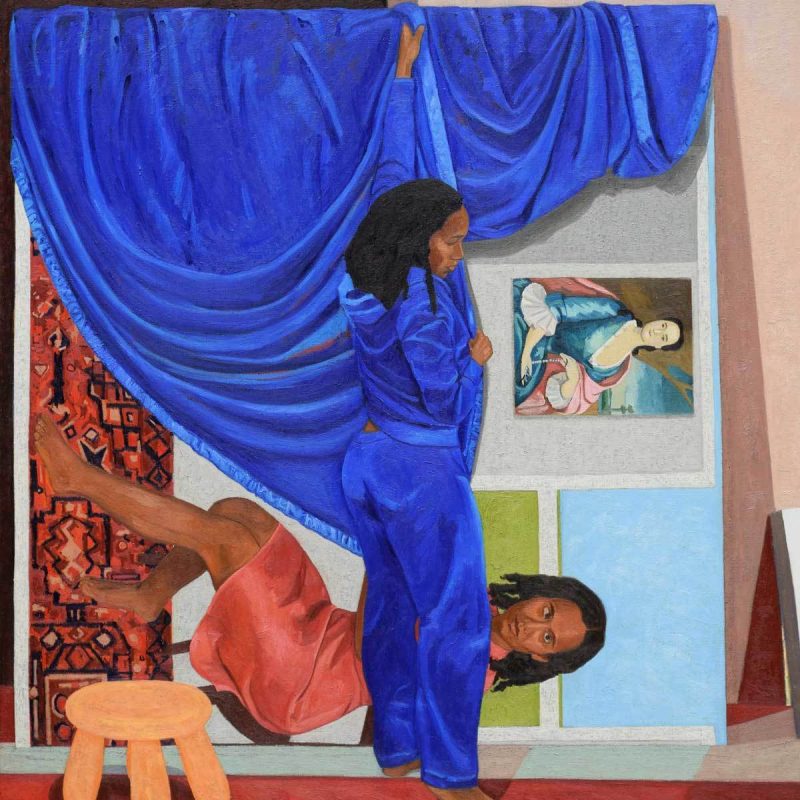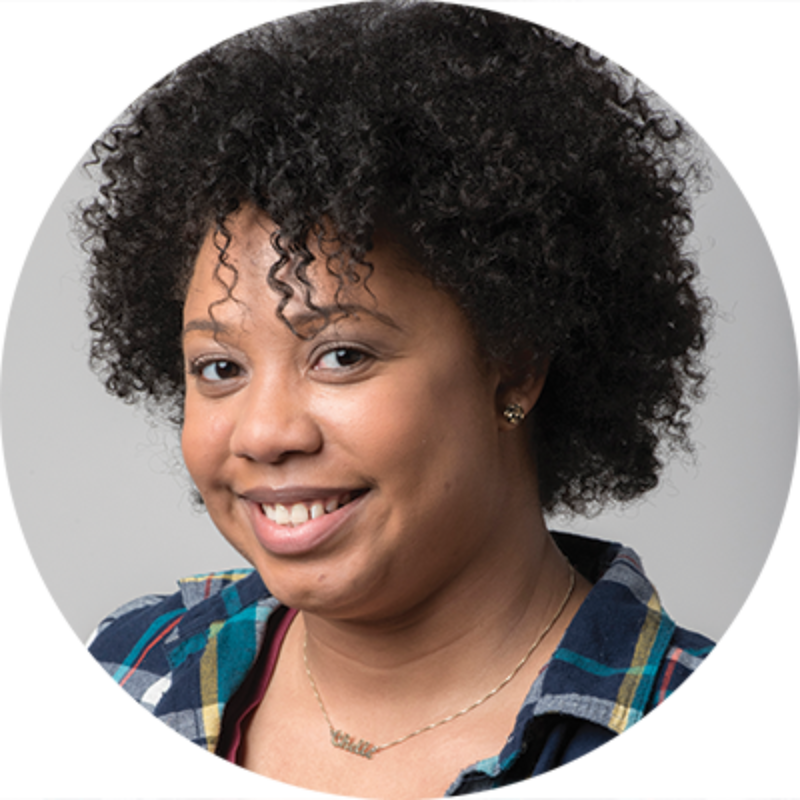
Painter and former MICA artist in residence Mequitta Ahuja is now one of the 2018 John Simon Guggenheim Memorial Foundation fellowship. Awarded to fewer than 200 people every year, the honor has been helping professionals expand on their art for nearly a century.
Ahuja’s artwork over the past 15 years has been an evolution of the typical self-portrait and this most recent recognition will help further her work to shift the self-portrait of a woman of color away from a conversation about identity and instead use it to show her expertise in painting.
What made you apply for the Guggenheim fellowship?
For a lot of artists, we apply for something and get our hearts set on it because we think it’s in our lane. Other times, we apply for some things just as exercises to kind of keep putting our work out there just to throw our hat in the ring. So, I applied to the Guggenheim more as an exercise honestly.
So, were you shocked that you were actually selected?
It was right near April Fool’s Day, on April 4, so I was like, ‘Wait, really?’ I was surprised bordering on disbelief, then once it settled in, I was just extremely proud, humbled, and excited. I think as artists we all learn how to make our work when money, support, and recognition is in short supply. But then when you finally get those things, it really is a confidence booster that makes it easier to do your work and to feel good doing it—it’s validation.
How long have you been painting?
It’s really the only thing I’ve ever pursued. My earliest memories are of wanting to be an artist. Of course, my ideas of what that means have grown and shifted over time, but it is what I studied in both undergraduate and graduate school. I’ve had a number of jobs over the years, but my main job has long been being an artist.
Can you explain why you chose self-portraiture as a focus for your art?
Working from oneself as a subject matter, we’re there as ready models. So, in some ways there’s this early convenience to it and I think the self and the expression of the self is a really basic and universal feeling.
As an adolescent, like most, I did a lot of self-portraits and as I got older, self-portraiture was not always the element of the work. Then it came back full force when I was in graduate school, initially again for convenience, I wanted to make figurative paintings. I started taking photographs of myself and working from those photographs. Then it has continued, I would say the meaning has changed. I’ve moved from thinking about self-portraiture being about my personal identity to moving to thinking about the genre of self-portraiture—it’s not just about picturing something about my identity.
In your artist statement you said you want to “turn the artist self-portrait into a discourse on picture making.” How does this reflect in your paintings?
There’s multiple layers of subject matter—some has to do with American history and some is dealing with a more domestic space. I want there to be multiple entry points for developing a relationship with the viewer and the painting. But I also don’t think I have control over that, so what a person gets from the painting is always an unknown factor in terms of how I may think about it. They may have a very different relationship with it.
As you said, this is a reflection of your most recent work which differs from your past work. What caused that transition?
Going back to adolescence, my story is that I have a relatively unique cultural heritage—my mother is African-American, and my father is from India. I think in the conversation about race, it’s always black and white. If somebody is mixed-race, we assume they’re mixed black and white, not Indian and African-American or two non-white ethnic groups. For a long time, that was the subject of my work, having that cultural heritage.
Growing older changes the degree in which those things matter. There was always a feeling I had that I didn’t fully fit into either of my heritage groups or just fit people’s expectations of me. When you get older, you just don’t care anymore [Laughs]. You don’t need to fulfill somebody else’s expectations and, as some of those concerns just became less prevailing in my experiences in the world and my identity, other things came forward. I was able to take self-portraiture and make it about the genre itself, about art history, about painting, and about what it means to position a maker of the work within the work.
How do your travels impact your artwork?
My paintings travel more than I travel. This month I had work in Hong Kong—a place I’ve never been to. I have one right now in London—a place I have been to but not since I was a kid. A lot of times I actually don’t travel with my work or to the shows. I’m really a homebody. Most recently I did a residency in Siena, Italy which had a big impact on me. For me, it’s an unalloyed good to have the work travel all over the world because it’s a way in which I can be a global citizen from the small area of land in Baltimore.
You aren’t originally from Baltimore. What made you settle here?
I was born in Grand Rapids actually and I’ve lived a lot of places. We left Michigan before I can remember. I spent my childhood in a couple of different towns in Connecticut and then I went to Massachusetts for undergrad and Chicago for grad school. Then Houston, New York, and then Baltimore.
The Maryland Institute College of Art invited me in 2011 as an artist in residence, that’s what brought me here. I met my husband the first week I was in Baltimore, at the time he was working on his PhD at Johns Hopkins—now he’s a scientist at Hopkins.
What do you think of Baltimore’s art scene?
I was just talking with some folks about what Baltimore needs and how we can promote Baltimore and lift each other up as artists in the city. There’s a lot of energy here, there’s a lot of support in terms of the social artist scene. There’s less support when it comes to gallery infrastructure and collector groups. I think a lot of us have to go outside of Baltimore to find that kind of support. I think that there are ways to build that kind of infrastructure here.
What’s your favorite thing to do in Baltimore?
I feel like this is boring, but I love going to the art museums. I really love the Walters, it’s one of my favorites out of anywhere. I also really love the Baltimore Museum of Art. I also recently discovered ice skating. It’s not about being good at it, half the fun is being bad at it [Laughs].
Now that you are a Guggenheim fellow, what’s next?
I’m working right now on a body of work for a fall show in Milan at a gallery called Brand New Gallery—that’s the actual name of the gallery. That’s what’s now. I will be leaving Baltimore for a month to do an artist residency this summer at the Marin Headlands in California. I’m really excited to continue with my work.
